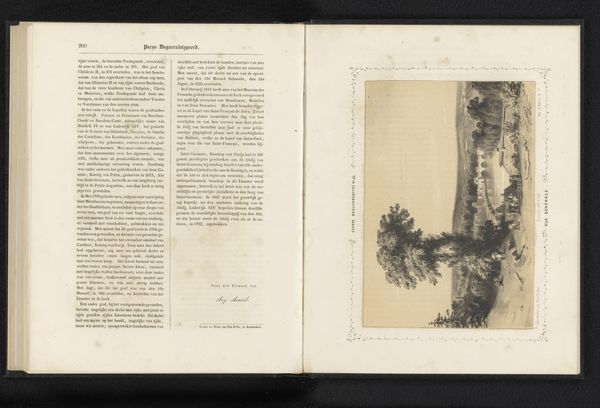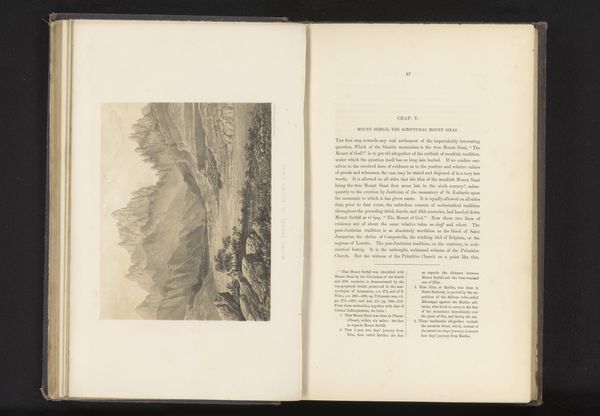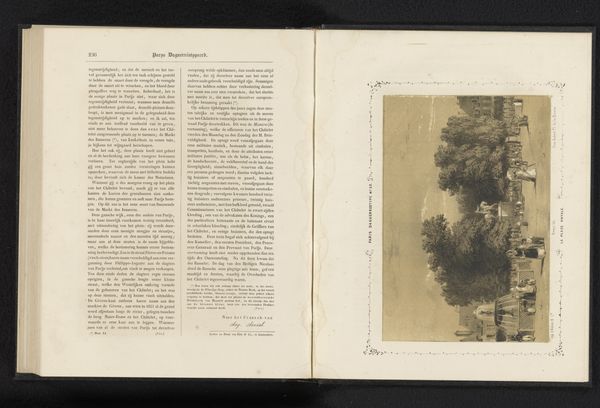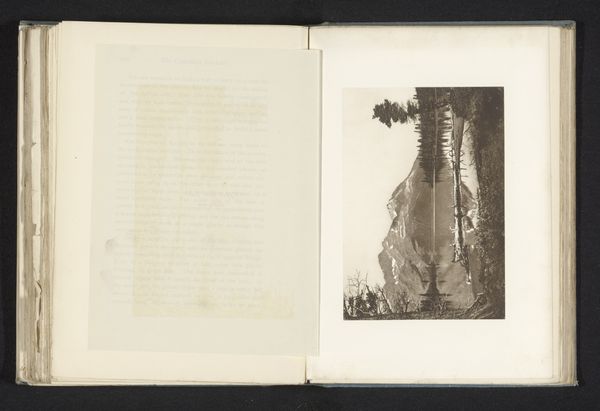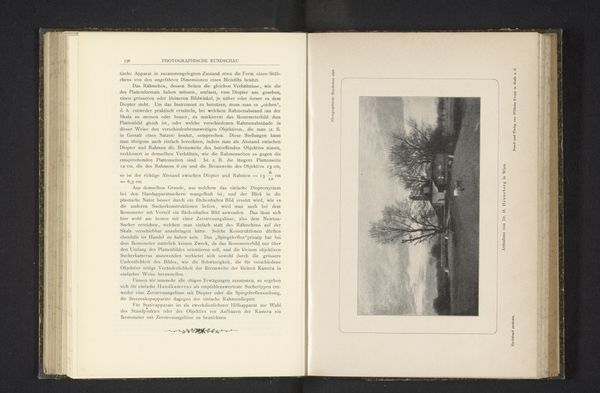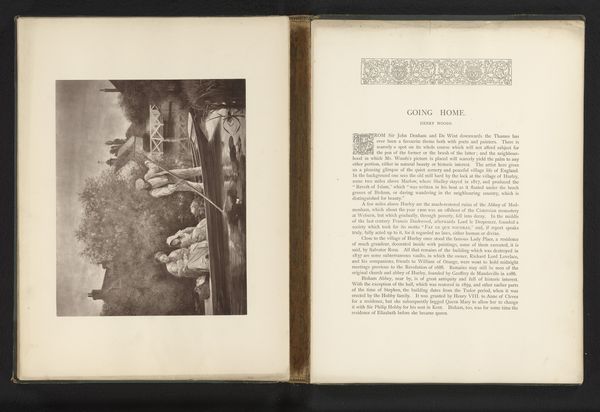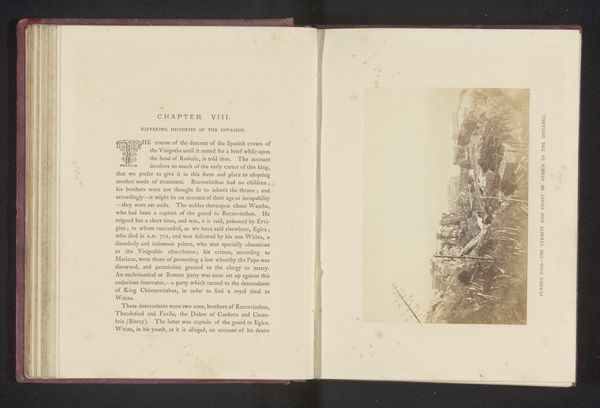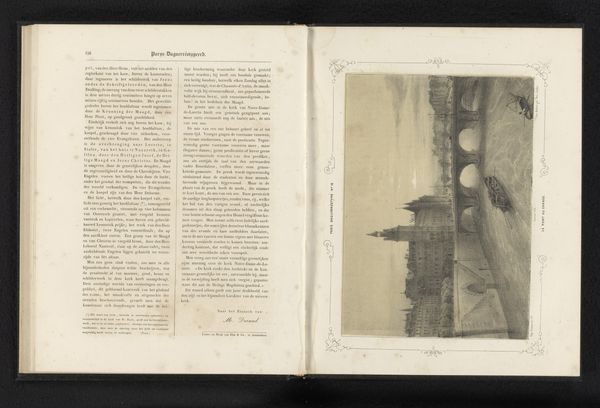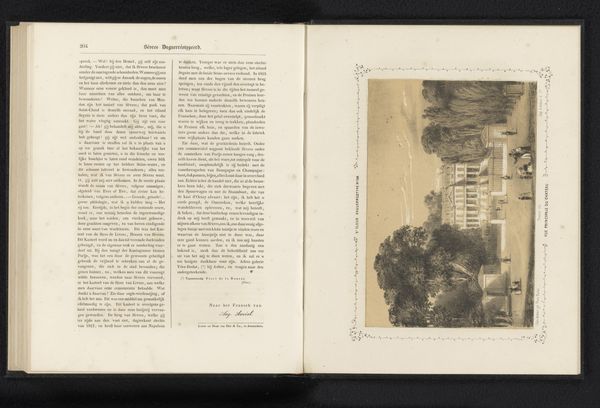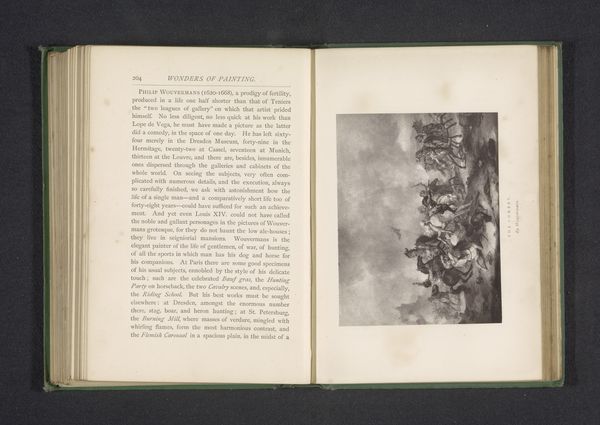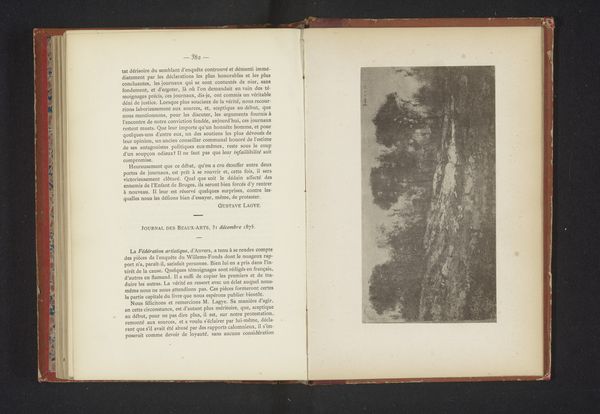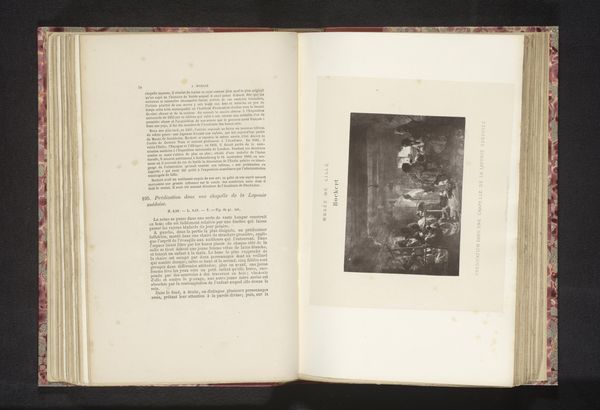
drawing, print, etching, paper, engraving
#
drawing
# print
#
etching
#
landscape
#
paper
#
romanticism
#
engraving
Dimensions: height 210 mm, width 260 mm
Copyright: Rijks Museum: Open Domain
Curator: Welcome. Let's delve into this print titled "Gezicht in Sèvres" dating to before 1840, created by A. Provost. It’s rendered through etching and engraving on paper. What’s your immediate reaction? Editor: Starkly beautiful, I’d say. It’s all monochrome shades—the solemn foreground trees contrast with the delicate structures barely visible in the distance. Almost feels dreamlike or like a faded memory. Curator: Interesting take. Viewed historically, this print places itself within a wider trend: The rise of Romantic landscape. Pieces like this allowed a burgeoning middle class to visualize sites made newly accessible via developments in travel and tourism. Editor: So the commodification of “nature,” picturesque sites for the burgeoning bourgeoisie, divorced, of course, from the labor and displacement involved in crafting these leisure destinations? Curator: Precisely. Etchings and engravings were easily reproducible, turning places like Sèvres into consumable images. Think of it as an early form of visual tourism that carries all of the related colonial, political, and class connotations. Editor: Right. Beyond the print's social function, consider the visual strategies. The low horizon, asymmetrical composition, all amplify a sense of something “untamed” and "natural," yet all the while carefully framed and mediated, just like leisure itself! It reinforces an understanding of landscape and nature that remains culturally loaded. Curator: Indeed. There is a sense of fabricated serenity, very deliberate in its construction. A constructed nature that conveniently hides social realities. Editor: And it highlights the role art played—and still plays—in crafting national identity and idealized environments. A poignant visual comment on our ongoing relationship with "nature". Curator: A very apt assessment. These seemingly innocent depictions conceal complex dialogues about societal structures. Editor: I'd say unpacking this landscape is vital. We get to interrogate ideas of leisure, representation, and who has access to those spaces—then and now. Curator: Well, I think this etching offers us more to consider than we first anticipated. Editor: Absolutely. There is still much here to unpack and to place in dialogue with contemporary ideas.
Comments
No comments
Be the first to comment and join the conversation on the ultimate creative platform.
